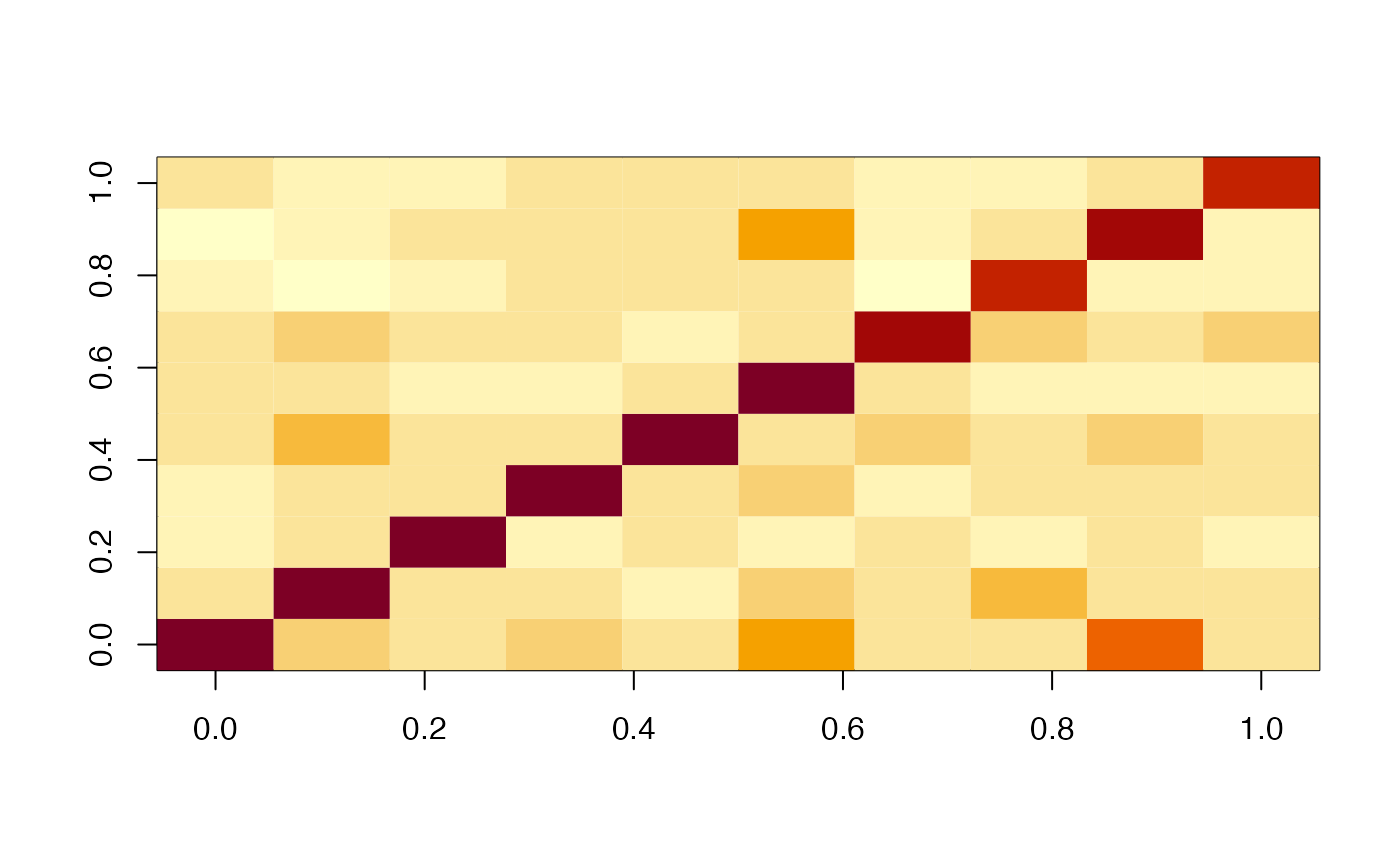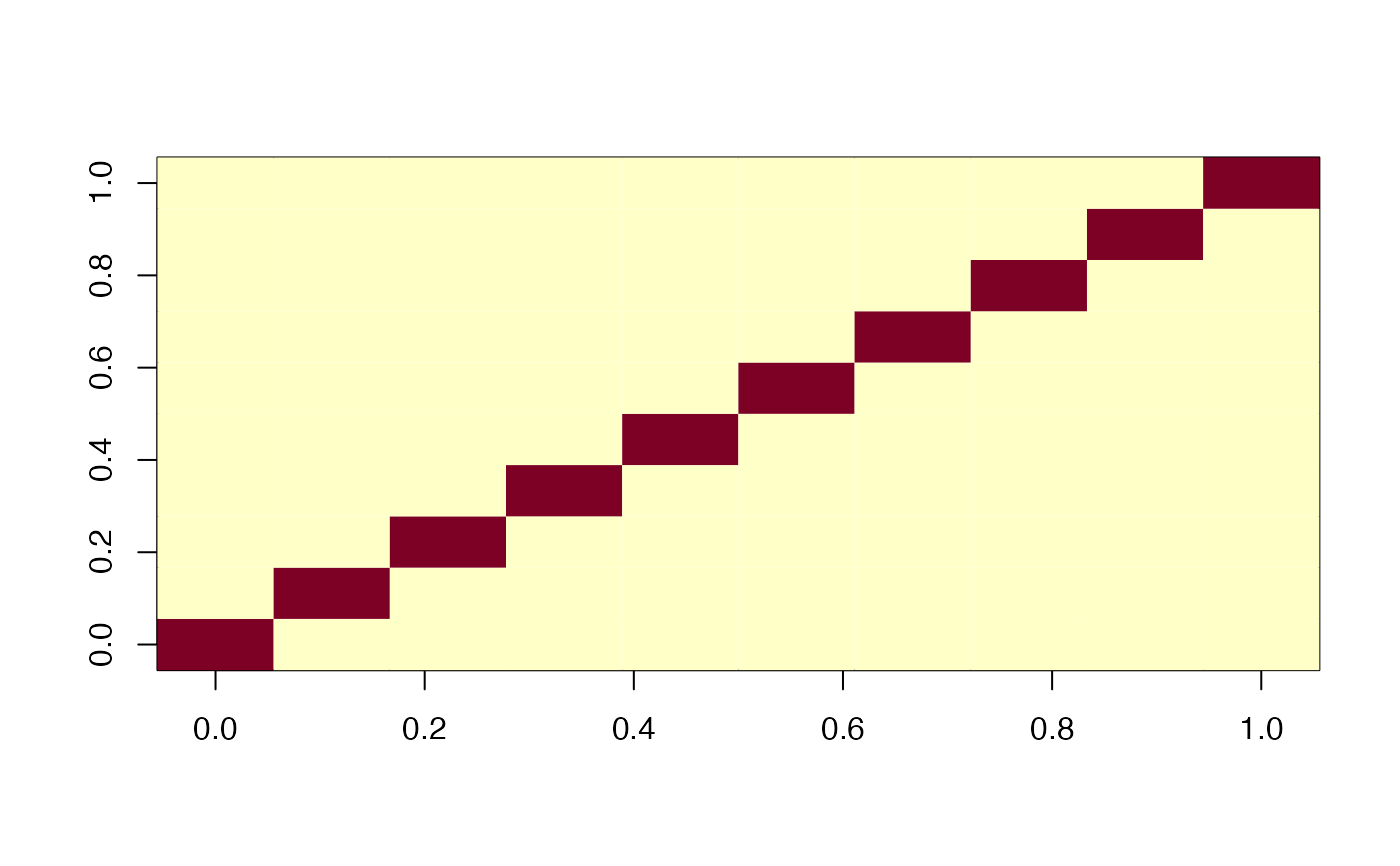perform varimax rotation on both rows and columns. If mode is specified, the only that mode is rotated.
Examples
im = make_interaction_model(all_packages, ~Package*Imports, parse_text = TRUE)
pcs = pca(im, k = 10)
# streaks(pcs)
sparse_pcs = rotate(pcs)
# notice how the rotation aligns the streaks with the axes...
# streaks(sparse_pcs, "columns")
# if you do not specify a mode, then the middle B matrix will not be strictly diagonal...
image(longpca:::get_middle_matrix(sparse_pcs))
 # if you rotate only the columns, then the middle B matrix is set to diagonal and this matrix is "pushed into" the other mode.
sparse_columns_pcs = rotate(pcs, mode = "columns")
# because we only rotated one mode, the B matrix is the identity matrix:
image(longpca:::get_middle_matrix(sparse_columns_pcs))
# if you rotate only the columns, then the middle B matrix is set to diagonal and this matrix is "pushed into" the other mode.
sparse_columns_pcs = rotate(pcs, mode = "columns")
# because we only rotated one mode, the B matrix is the identity matrix:
image(longpca:::get_middle_matrix(sparse_columns_pcs))
 # these values were pushed into the row_features. You can see that their scale is drastically reduced:
sparse_pcs$row_features$vpc_01_rows |> sd()
#> [1] 0.9769102
sparse_columns_pcs$row_features$vpc_01_rows |> sd()
#> [1] 5.553314e-05
# importantly, this is not simply the row pcs scaled by the singular values... it is also rotated by the varimax rotation for the columns...
# here is the algebra using the SVD:
# U D V' = (UDR)(VR)'
# after rotating only the columns...
# (UDR) gives the new row_features
# (VR) gives the new column_features
# these values were pushed into the row_features. You can see that their scale is drastically reduced:
sparse_pcs$row_features$vpc_01_rows |> sd()
#> [1] 0.9769102
sparse_columns_pcs$row_features$vpc_01_rows |> sd()
#> [1] 5.553314e-05
# importantly, this is not simply the row pcs scaled by the singular values... it is also rotated by the varimax rotation for the columns...
# here is the algebra using the SVD:
# U D V' = (UDR)(VR)'
# after rotating only the columns...
# (UDR) gives the new row_features
# (VR) gives the new column_features